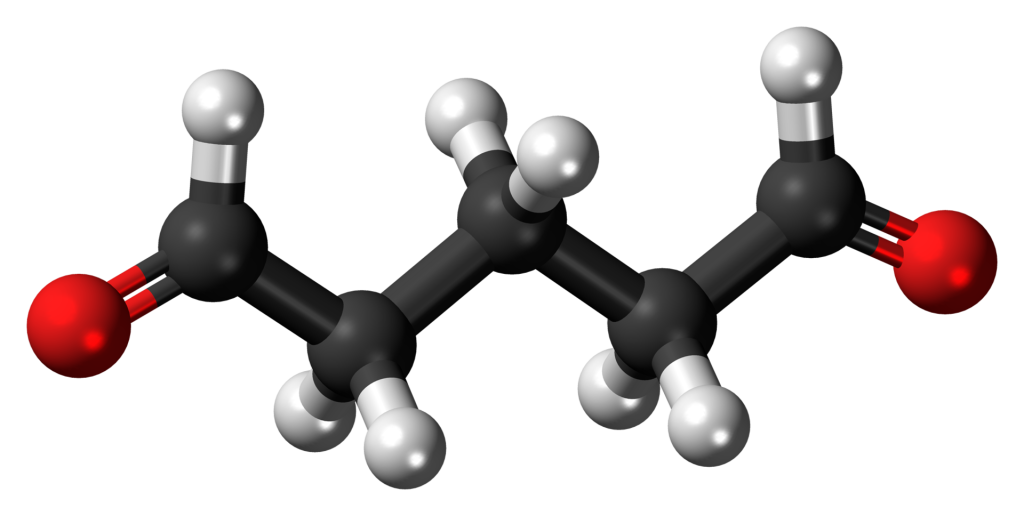Glutaraldehyde, known by various names including Glutaral and Pentanedial, is a chemical compound with the formula C5H8O2. Commonly used in the medical, industrial, and laboratory settings, this colorless liquid carries a distinct pungent odor. Let’s delve into the essential information about glutaraldehyde, its applications, potential health risks, and the necessary safety measures.
Names and Numbers:
Other Names: Glutaral; Pentanedial; Cidex
Chemical Formula: C5H8O2
CAS Number: 111-30-8
Industry Uses:
Glutaraldehyde serves multiple purposes across diverse industries. Its primary applications include use as a disinfectant for medical and dental equipment, participation in industrial water treatment processes, and utilization as a chemical fixative and preservative.
What is Glutaraldehyde:
A colorless liquid with a pungent odor, glutaraldehyde is non-flammable and non-combustible. Its oily consistency at room temperature allows it to mix seamlessly with water, alcohol, and benzene. Notably, it is toxic to aquatic life and acts as a strong reducing agent, reacting with strong acids, bases, and oxidants.
Glutaraldehyde Exposure and Health Risks:
While glutaraldehyde is non-flammable, it poses health risks if inhaled, swallowed, or if there is direct contact. The chemical acts as an irritant, causing severe discomfort to the eyes, nose, throat, and lungs. Dermatitis and skin burns can result from direct contact. Symptoms of poisoning include headaches, dizziness, drowsiness, and abdominal pain. Prolonged exposure can lead to allergy or asthma symptoms.
Regulations:
Regulatory bodies, including the Occupational Safety and Health Administration (OSHA) and the National Institute for Occupational Safety and Health (NIOSH), have established exposure limits to ensure the safety of individuals working with glutaraldehyde.
Exposure Limit:
- 0.2 ppm (C) – OSHA
- 0.2 ppm (C) – NIOSH
Sources: NIOSH, OSHA
Measuring Glutaraldehyde:
Monitoring glutaraldehyde concentration is crucial for maintaining a safe environment. As a Volatile Organic Compound (VOC), it can be measured using a general VOC monitor or a specific Glutaraldehyde Sensor. The Glutaraldehyde Badge, constructed with cells attached to a flat indicator layer, provides a direct measure of exposure by changing color based on glutaraldehyde concentration. Additionally, VOC monitors, such as Heated Metal Oxide Sensors (HMOS) and Photoionization Detector (PID), offer versatile options for measuring various gases.
Calibration Services:
Regular calibration of gas measurement devices is essential to ensure accuracy and adherence to safety standards. Calibration services are available, with costs varying based on the type of component and service required.
Calibration Costs:
- Calibration Fee: $150
- Analyzer Calibration Fee: $300
- PM Calibration Sensor Fee: $330
- Genie Calibration Fee: $265
- ATI Calibration Fee: $205
Note that prices are subject to change based on labor and parts required.
In conclusion, understanding the properties and risks associated with glutaraldehyde is paramount for ensuring a safe working environment. Regular monitoring, adherence to exposure limits, and proper calibration of monitoring devices are critical components of a comprehensive safety strategy. For assistance in selecting the right monitoring solution or calibration service for your application, feel free to contact us. Your safety is our priority.


